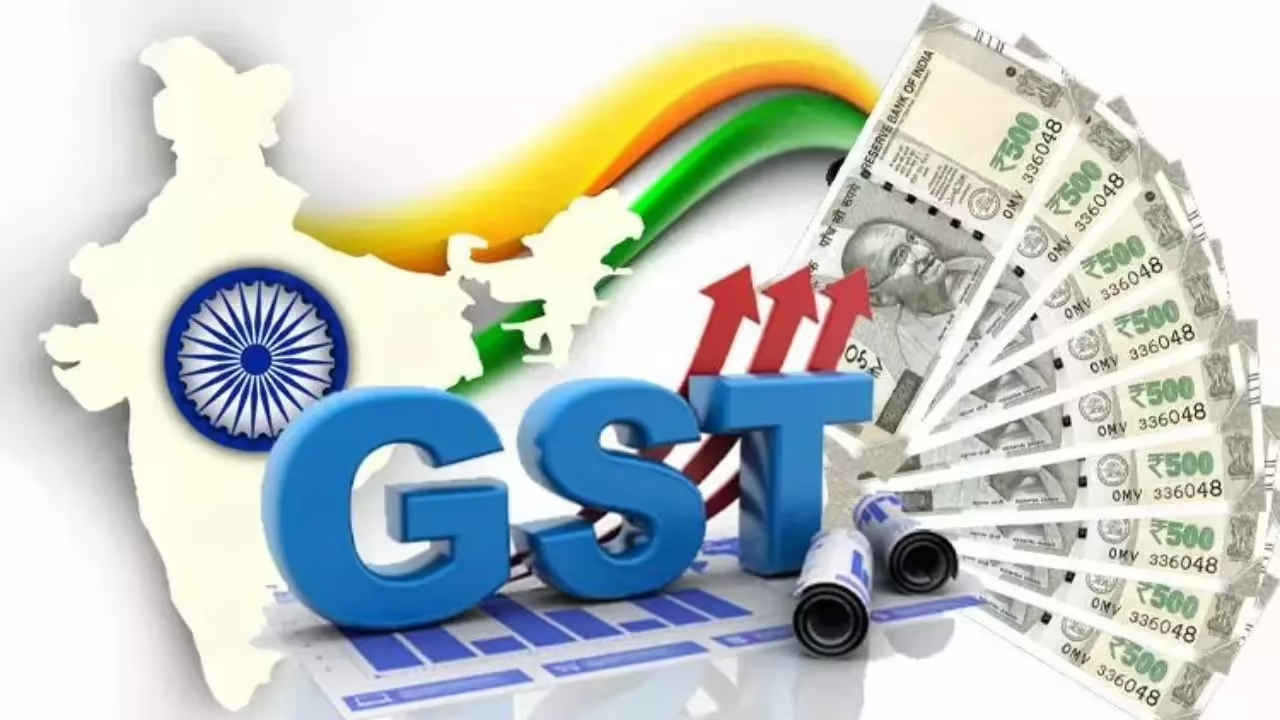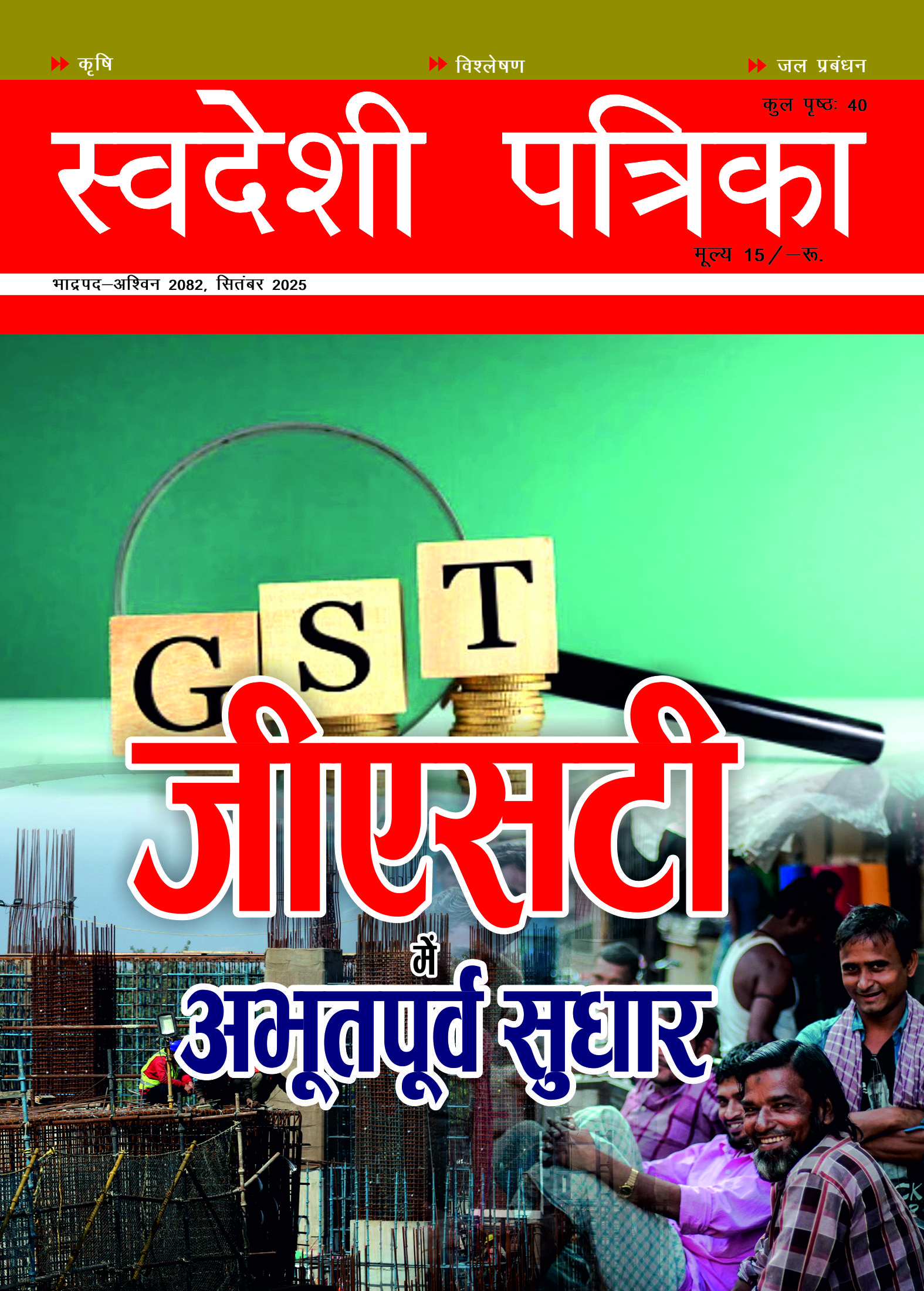
GST blending Hindu Economics
Hindu Economics is comprehensive, and many standalone economic philosophies that originated in the Western world have failed. It is the duty of all of us to practice economics that makes our neighbourhood wealthy and promotes abundance for all. — Alok Singh
The Hindu Economics, authored by Dr. M. G. Bokare, studies economics in search of a sustainable system and recommends democratization of economics on the foundations of Hindu philosophy. The goods and services tax (GST), an indirect tax structure, is to democratize the contemporary business system from a tax perspective.
Hindu economics believes in an ideal system that provides interest-free loans, considers loans a burden, and promotes the free movement of resources, including people, goods, and services. The perfect situation is far away today in the era of benchmarks of geopolitics, in the era of technology and money driving politics, and in the era of the speedy transition phase of world order.
The GST was implemented in 2017 by the Central Goods and Services Tax Act, 2017. The act was necessary to provide a level playing field among big and small, among separated and integrated businesses, and sufficient scope for small players to compete with the big players for offering the same products.
GST also intended to examine the micro-scale enterprise’s disadvantage vis-a-vis a small-scale enterprise, a small-scale enterprise’s disadvantage vis-a-vis a medium-scale enterprise, and a medium-scale enterprise’s disadvantage vis-a-vis a large-scale enterprise.
The policy makers offered GST, and GST provided a level playing field as far as taxation is concerned. Further, the micro, small, medium, and large enterprises succeed on their own culture, innovation, financial capital, human capital, and many other resources.
The GST framework democratizes taxation. The well-known tools engaged are the input tax credit, and the area of concern is the inverted duty structure. The input tax credit is the reimbursement of taxes paid by businesses on the raw materials and services they procure in the process of delivering the final product. The inverted duty structure is a situation where the taxes paid on raw materials are higher than the tax that needs to be paid on the final product. The sequence of taxpayers matters.
The micro enterprise manufacturer of the final product pays taxes on the input, i.e., raw materials, and gets it reimbursed. However, there is another relatively larger manufacturer that produces its own raw materials and pays taxes only on the final product, which is then collected from customers on behalf of the government. This system was in place before the GST regime. Now, the GST framework has brought customers on the same level as far as taxation is concerned. In that sense, the GST is promoting good democracy.
But as soon as the situation of an inverted duty structure arises, where the taxes on the final products are less than those on input materials, then it gives birth to arbitrage opportunities. The GST is a success when all the enterprises are fair and transparent in disclosing their volume of consumption of input materials and taxes incurred on such materials.
Unfortunately, today it’s a matter of survival due to global trade rules, which also require us to rely on large players to achieve self-reliance. At the same time, we advocate for Hindu Economics, which demands a level playing field for both large and small enterprises.
The product quality, the product pricing, the processing methods, the organizational culture, the innovative practices, the consistency in research and development, the customer loyalty, and many intangible factors determine the rise and fall of businesses. Taxation is just one among many factors, and the GST aims to diminish the discrimination between big and small.
The bone of contention is, of course, the inverted duty structure, as many constraints put small businesses at a disadvantage in claiming the input tax credit. For instance, if the final products attract no taxation, but the input materials were procured by paying taxes, this creates a complicated design. The manufacturer will be paying the taxes, whereas the end-user customer will not. This situation is akin to raising the production cost.
Our manufacturers are competing in an environment of economies of scale from highly subsidised foreign players. Micro enterprises need time to compete, and the clarity on the inverted duty structure has a significant role to play.
The two-slab GST is an improvement over the earlier format. The state governments are also concerned about their share of the GST revenue. The ultimate aim of GST is to formalize the Bhartiya economy, and the input tax credit is intended to discourage unfair practices. However, such dishonest practices are often glorified as an arbitrage opportunity.
The GST Council has also established the GST Appellate Tribunal, GSTAT, which is expected to be operational this calendar year.
The onus of Hindu Economics is not solely on tax inspectors. Hindu Economics is a comprehensive economic philosophy. Apart from external agencies, such as the World Trade Organization, international climate and human rights-related organizations, and foreign capital and investment banking institutions, there are significant internal agencies responsible for blending their practices with Hindu Economics.
The most crucial agent in promoting the Hindu economy is the customers. Customers must believe that their purchases are making their neighbourhood wealthy. The sequence of customers has to feel the same way. Every manufacturer is a customer of its input raw material suppliers, every human resource has to share and train their expertise among themselves, and every stakeholder has to behave in a climate-friendly manner.
The Hindu Economics is a self-regulatory economic design that cares for all the stakeholders, whether external or internal. It believes in the philosophy of abundance. It discourages concentration of businesses in a few hands.
The policymakers are consistently blending the GST framework with Hindu Economics. GST has blended many alignments, and many more will surely be achieved. But taxation is just one component, and all other elements have to act and follow the path that leads to Hindu Economics. It is more about social and environmental economics rather than standalone political economics. Hindu Economics is comprehensive, and many standalone economic philosophies that originated in the Western world have failed. It is the duty of all of us to practice economics that makes our neighbourhood wealthy and promotes abundance for all.
(Alok Singh has a doctorate in management from the Indian Institute of Management Indore and is a promoter of Transition Research Consultancy for Policy and Management.)


